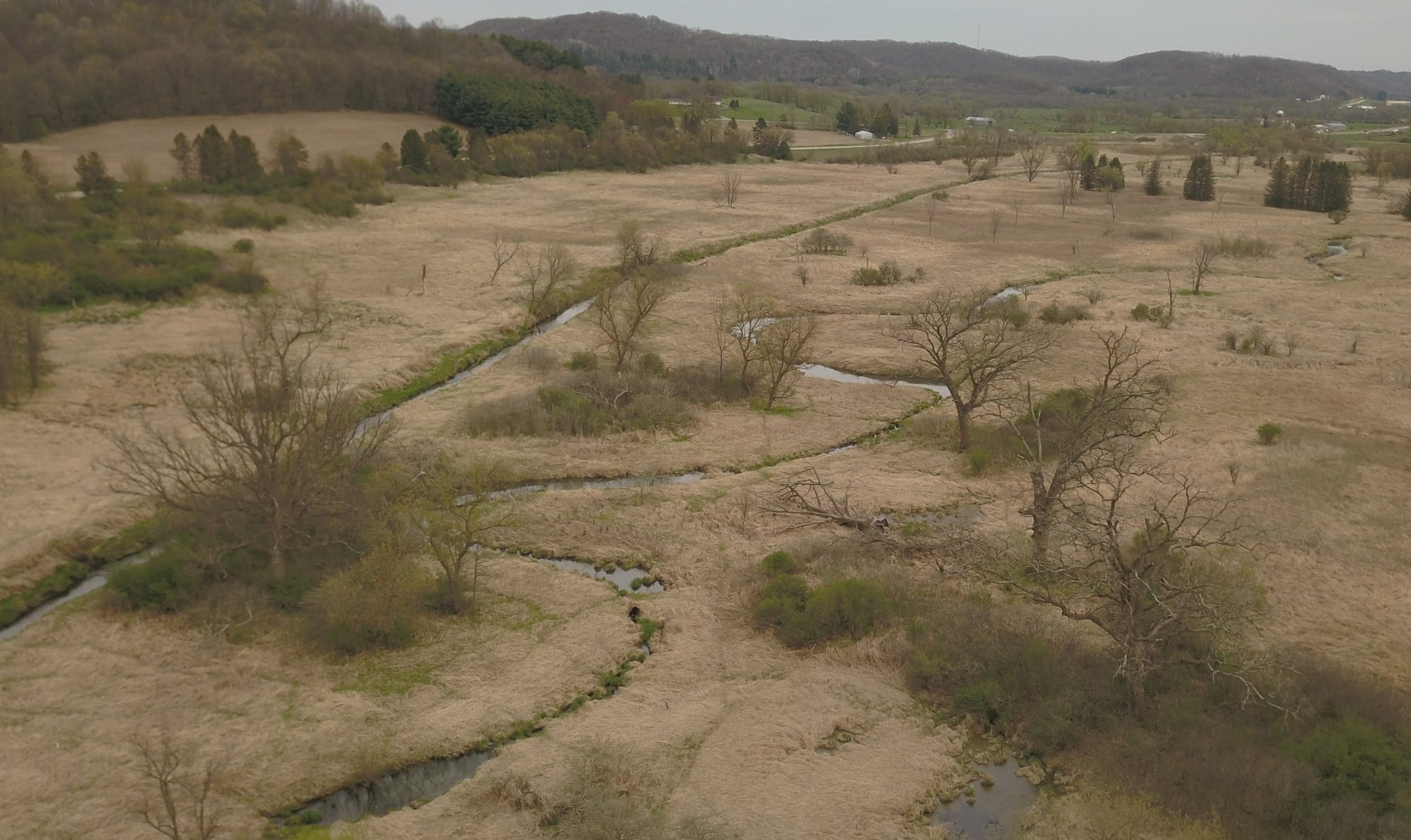TU and partners will restore Wisconsin stream to its former channel
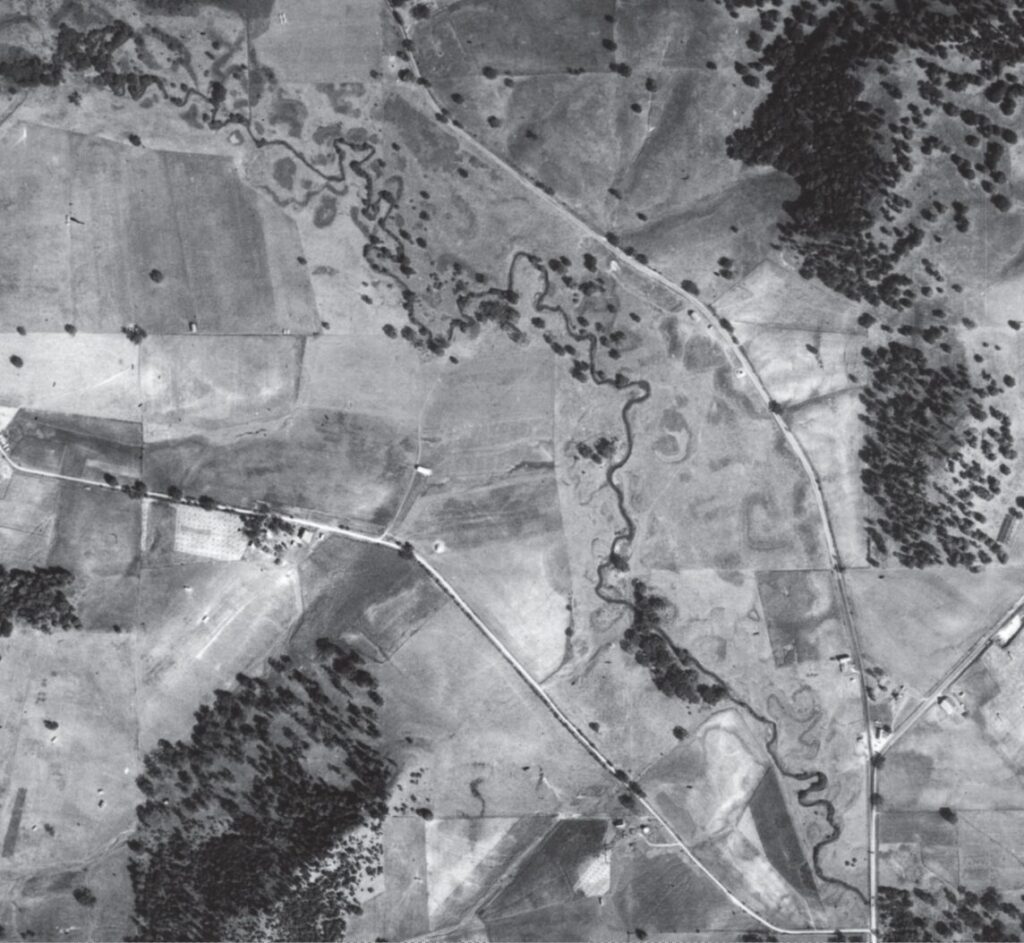
In the aerial photo, Fancy Creek looks like an idyllic Driftless Area trout stream. As it meanders through a wetland in tight bends, you can almost imagine big brown and brook trout hunkered under banks waiting for the stream to bring them their next meal or for a plump grasshopper to meet its end after getting blown into the water.
The problem?
That picture is from 1937.
Not much later, well-meaning landowners diverted the Richland County, Wisc., stream into a ditch in the hopes of helping convert the wetland into workable farmland. Today, Fancy Creek cuts a deep, straight path through the property, a featureless ditch lacking complex aquatic habitat and the creatures that rely on that habitat.
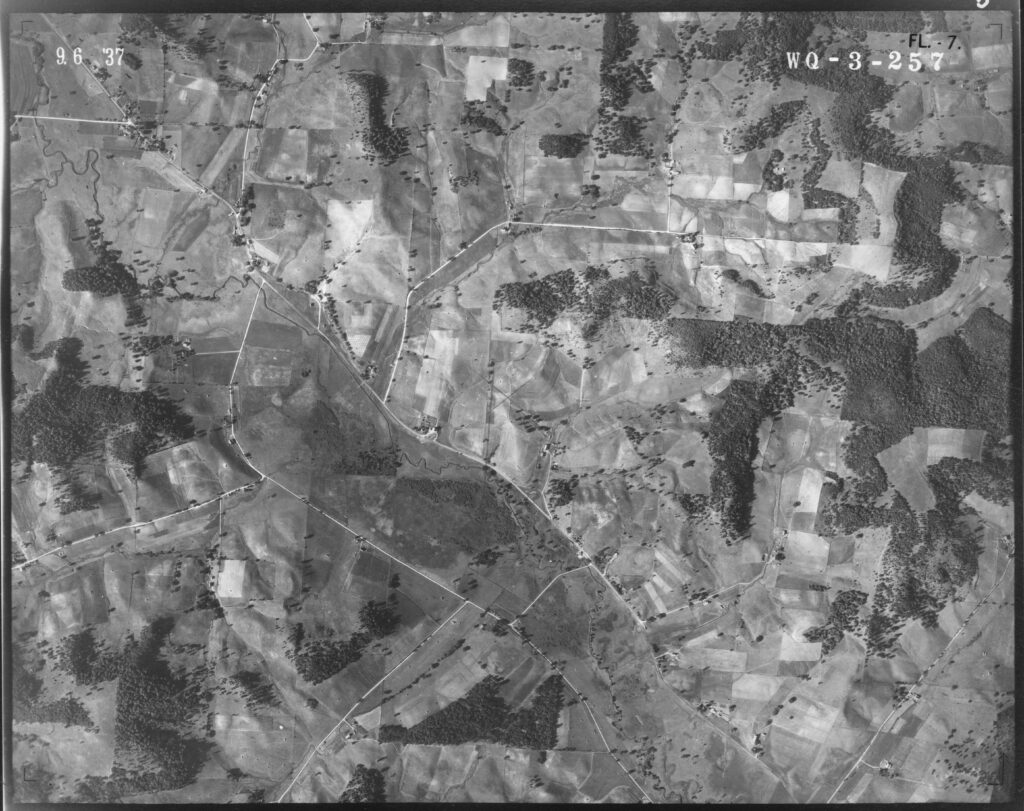
The wetland is still soggy, too, meaning that the ditching not only ruined a stretch of a stream, but it also didn’t create more farmland.
That will change this fall, when Trout Unlimited undertakes an ambitious project to put Fancy Creek back in its natural channel.
“We’re going to restore natural hydrologic function to the Fancy Creek wetland complex by returning flow to the historic meander channel and minimizing the impacts of that manmade ditch,” said Sara Strassman, who heads the TU-led Driftless Area Restoration Effort Fish Habitat Partnership. “The project will greatly improve aquatic and wetland habitat, restore connectivity of the stream to the floodplain, attenuate flood flows and raise wetland groundwater levels.”
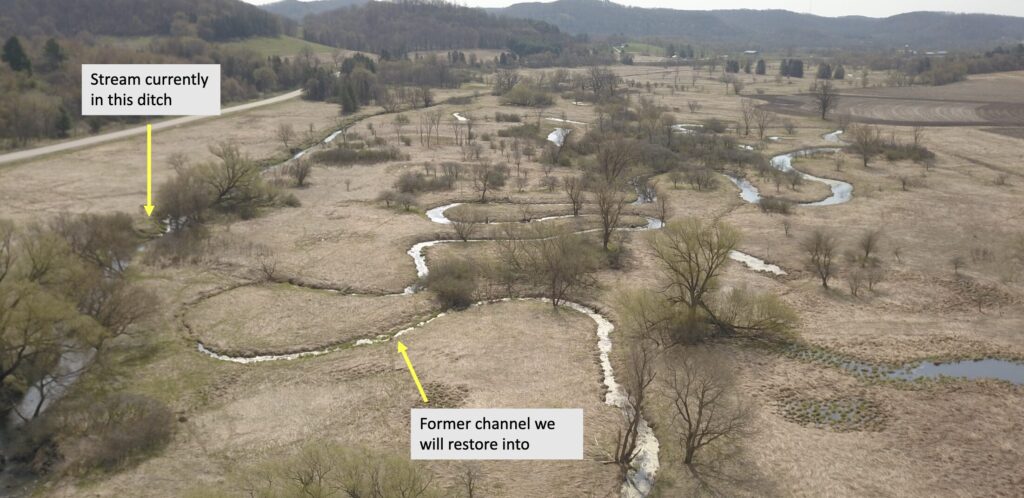
And, as anyone who has fished a restored Driftless stream knows well, another benefit will be a stream filled with habitat and trout.
“One of the big opportunities for this project is that the historic channel was never completely filled in, farmed over or otherwise obliterated,” Strassman said. “We will be able to follow the historic channel alignment for much of the restoration.”
The project will nearly double the length of the stream through the project stretch, which will span two properties. The new stream length will be nearly 6,000 feet, an increase of approximately 2,700 feet.
The upstream land parcel is in a conservation easement with the Mississippi Valley Conservancy, an arrangement that provides permanent protection of the restoration effort. The downstream parcel has a Wisconsin DNR Stream Easement, accessible from the Hwy 80 bridge.
The meandering flow will help dampen flood pulses. Instead of high flows barreling downstream through the ditch — which is 10 feet deep in places — high waters will re-engage with the natural flood plain.
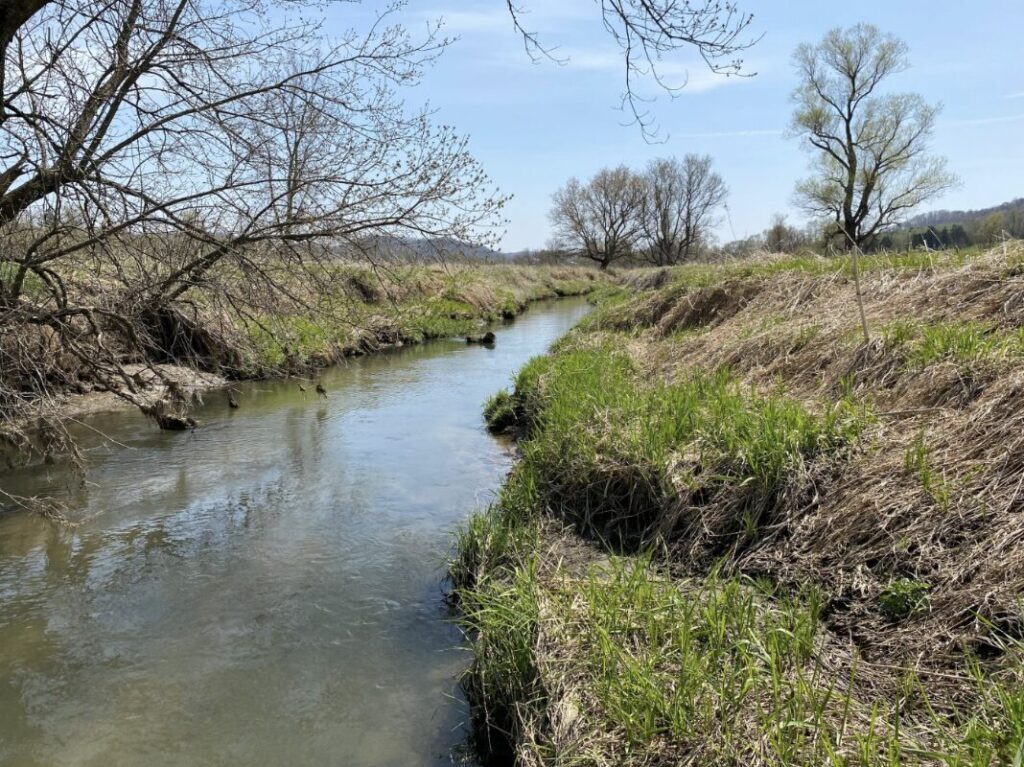
The project will also include restoration of natural habitats such as riffles, runs and pools. An increase of gravel habitat, of which there is little in the ditch, will benefit spawning trout.
The project will also benefit the 112 acres of wetland through which the stream will flow. Goals for the wetland include increasing the amount of sedge vegetation while reducing the amount of reed canary grass. The project will include significant monitoring efforts for groundwater response, fish and wildlife activity, and a variety of other measurements. A DIY Mayfly station currently on site collects data on water levels, temperature and conductivity that can be viewed HERE.
All TU Mayfly sites can be viewed HERE.
Partners in the project include the Mississippi Valley Conservancy, Wisconsin Wetlands Association, the Wisconsin Department of Natural Resources, Richland County Land Conservation, Valley Stewardship Network, the Natural Resources Conservation Service, University of Wisconsin (Madison), Pheasants Forever and the participating landowners.
Cummins Inc., a global leader in power solutions and a key supporter of this project, operates a facility in Mineral Point, Wisconsin. As part of its environmental sustainability objective of generating net water benefits that exceed its annual water use across all regions, Cummins invests in initiatives that improve local water systems. The restoration of healthy floodplain wetlands and a naturally functioning stream aligns with the shared environmental goals of both Cummins and Trout Unlimited. Employees participated in a work day at the project site this June.
Strassman said the project is waiting for issuance of final permits and should be complete by the end of the summer 2026.
“It’s rare to have a relatively intact channel and a sedge meadow complex in a valley that was ditched,” Strassman said. “It’s going to be beautiful when water is once again flowing freely through that channel, the way the stream was meant to be.”



